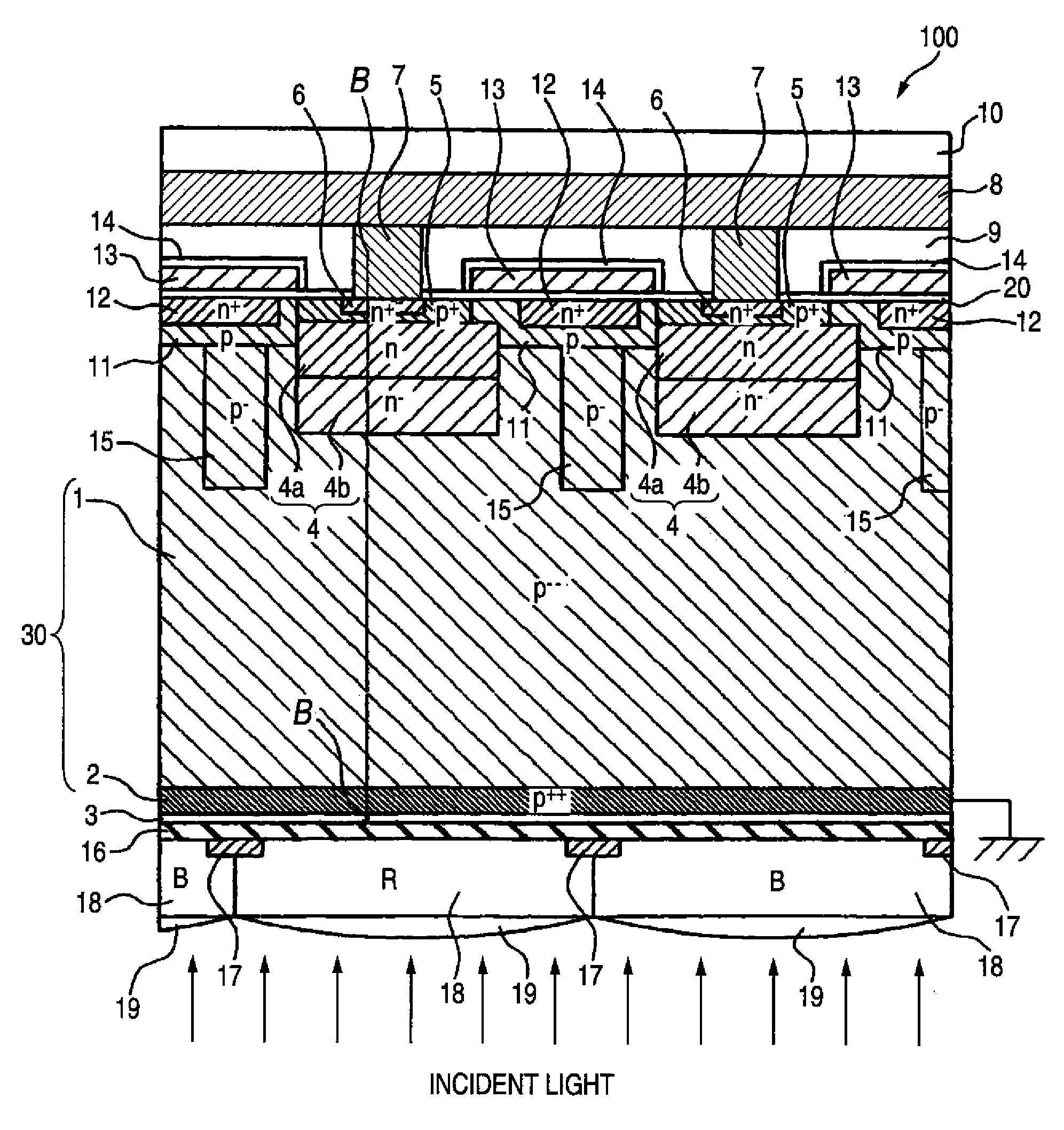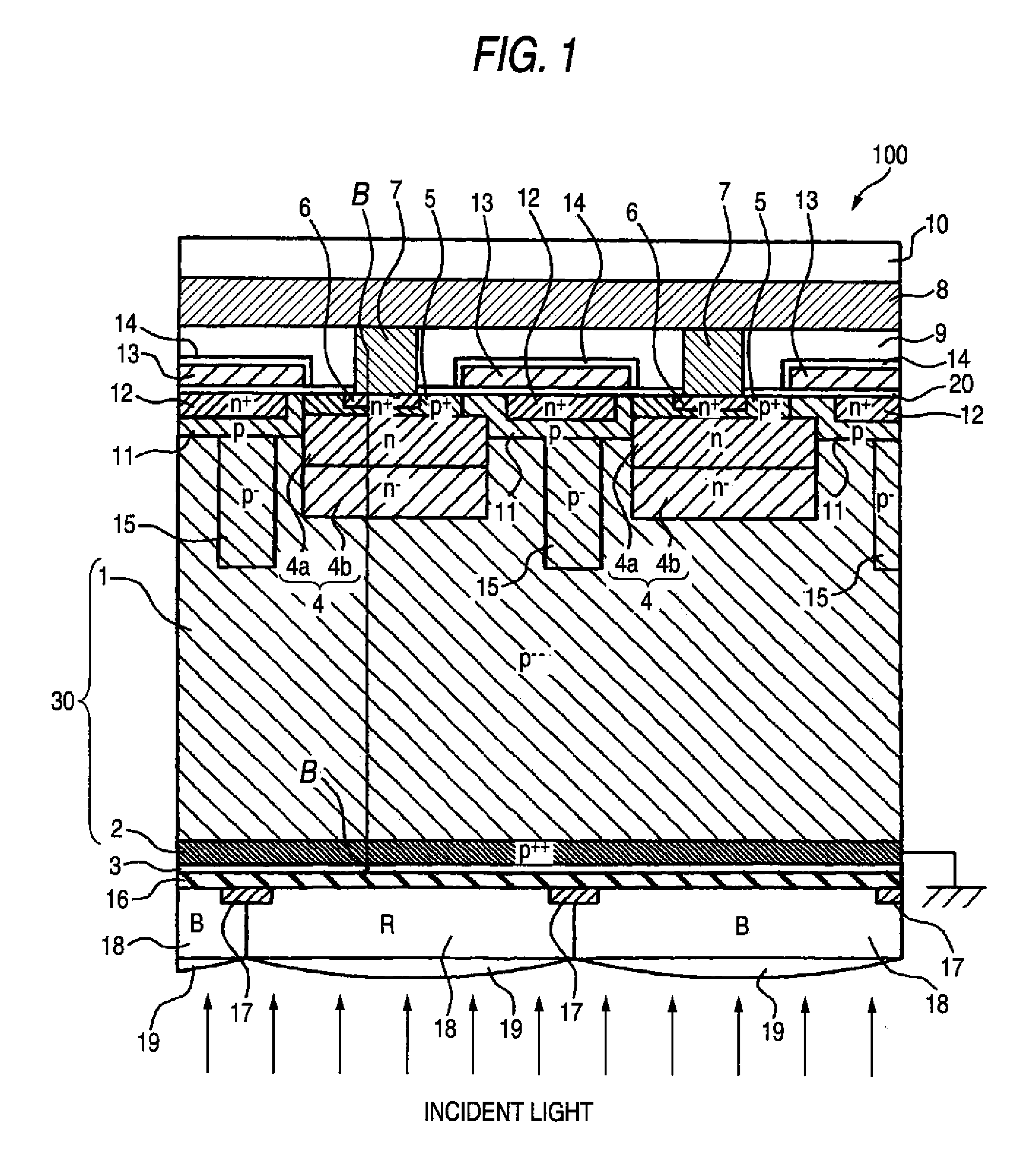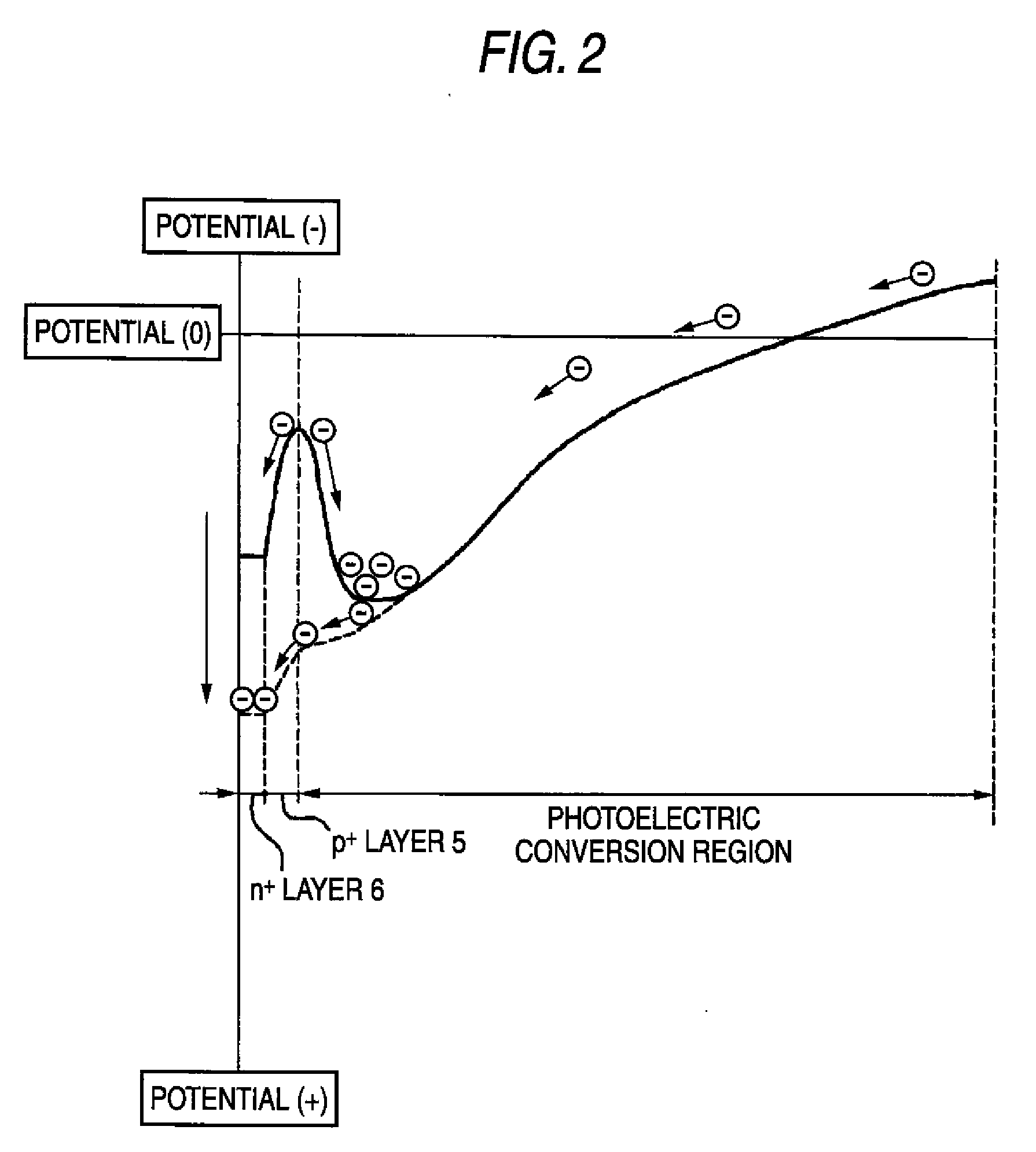Backside illuminated imaging device, semiconductor substrate, imaging apparatus and method for manufacturing backside illuminated imaging device
a technology of illumination imaging and semiconductor substrates, which is applied in the direction of material analysis, radio frequency controlled devices, instruments, etc., can solve the problems of insufficient size of each constituent element, interference of the wiring portion of the wiring layer, and difficulty in keeping a saturation signal amount, so as to prevent an increase in dark current, stabilize the gettering capability, and high-quality image pickup
- Summary
- Abstract
- Description
- Claims
- Application Information
AI Technical Summary
Benefits of technology
Problems solved by technology
Method used
Image
Examples
specific example 1
[0414]Temperature: 300 ti 500° C.
[0415]Pressure: 100 to 200 Pa
[0416]Used Gases: Ar / O2 / H2 (of a mixture ratio of 100 / 1 / 1)
[0417]In the above conditions, oxygen gas is plasmanized with microwaves. Accordingly, the oxygen gas becomes highly active oxygen radical and sacrificial oxidation can be performed in the vicinity of the surface on which the SOI substrate is exposed. Actually, a high-quality oxide film having a film thickness of 10 nm is generated by radiating the microwaves for 150 seconds. However, the gases other than oxygen of the available gases are not essential. Argon (Ar) is an inactive carrier gas and hydrogen is used for the purpose of promoting oxidation.
[0418]Since oxidation is performed in only a reaction rate control region also for the highly active oxygen radical, a range up to a film thickness of 10 nm is a practical region in the low-temperature oxidation treatment. When an oxide film of more than the film thickness of 10 nm is formed, productivity is lowered sin...
specific example 2
[0419]Temperature: 400° C.
[0420]Pressure: 100 to 200 Pa
[0421]Used Gas: High-concentration ozone
[0422]In the above conditions, the low-temperature oxidation treatment is performed. Also in this case, a practical thickness range of a film to be formed is about 10 nm.
[0423]In the next step S16 as shown in FIG. 30, the low-temperature oxide film 75 of the surface (see FIG. 34(b)) formed in step S15 is removed (Fifth Step). For example, the low-temperature oxide film can be removed by performing a fluorine-nitric acid treatment or the like. That is, since the low-temperature oxide film 75 contains the gettering layer contaminated by heavy metal, the contaminated layer can be completely removed by exfoliating a total of the low-temperature oxide film 75. The resulting state is shown in FIG. 35(a).
[0424]In the next step S17 as shown in FIG. 30, another low-temperature oxidation treatment is performed in the vicinity of the surface on which the SOI substrate is exposed. An uncontaminated cl...
PUM
 Login to View More
Login to View More Abstract
Description
Claims
Application Information
 Login to View More
Login to View More - R&D
- Intellectual Property
- Life Sciences
- Materials
- Tech Scout
- Unparalleled Data Quality
- Higher Quality Content
- 60% Fewer Hallucinations
Browse by: Latest US Patents, China's latest patents, Technical Efficacy Thesaurus, Application Domain, Technology Topic, Popular Technical Reports.
© 2025 PatSnap. All rights reserved.Legal|Privacy policy|Modern Slavery Act Transparency Statement|Sitemap|About US| Contact US: help@patsnap.com



